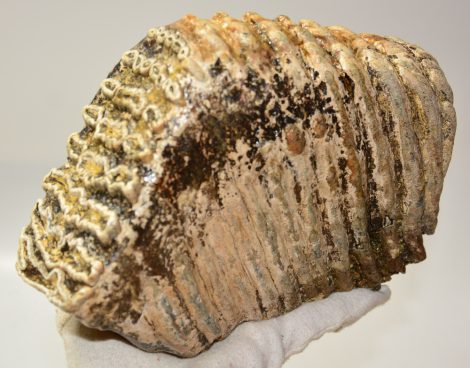- New arrivals
- Products in stock
- Mammuthus fossils [515]
- Megaloceros deer fossils [22]
- Bison Bos fossil [26]
- Rhinoceros fossil [35]
- Echinoderms sea urchin fossil [28]
- Plant wood fossils [37]
- Fish and shark fossils [49]
- Ammonites cephalopods [28]
- Mammalian vertebrates fossils [82]
- Dinosaurus fossil [42]
- Shells fossils [9]
- Gastropods fossils [24]
- Coral fossils [5]
- Trilobites & Crabs fossils [25]
- Minerals [26]
- Insect fossils [19]
- Other Fossils [11]
- Books, literature [10]
Elephas hysudrindicus tooth (4134 grams) SOLD (PA) 07
Late Pleistocene upper tooth of Elephas hysudrindicus (Blora elephant). The origin of the tooth fossil is Indonesia. The dimensions of the tooth are approx.: length 236 mm, height 174 mm, width 87 mm. Its weight is approx. 4134 grams + packaging. When the tooth was found, it was broken into two pieces. It was glued together with cyanoacrylate. The surface of the tooth is preserved with a substance called Polyvinyl Butyral 30 dissolved in ethanol.
Elephas hysudrindicus is known as the Blora elephant (named after the village of Blora, where the species was discovered). This species of elephant lived in Indonesia during the Middle and Late Pleistocene. With a height of 4 meters, a body length of 5 meters and a weight of up to 10 tons, this species of elephant rivals the dimensions of the African elephant or the woolly mammoth. It was the largest terrestrial megafauna ever found in Indonesia.









